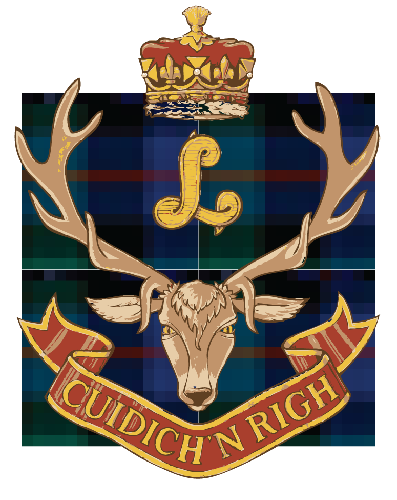The 16th Battalion
Lieutenant-Colonel R.G. Leckie.
Huge crowds saw the Seaforth contingent off to Valcartier in 1914. Note the Wolseley helmets: these “stove-pipe hats” did not impress the other units in the 16th Battalion.
The Seaforth officers serving in the 16th Battalion (Canadian Scottish) on the troopship Andania en route to Egnland with the 1st Canadian Division, October, 1914.
When war was declared on August 4th, 1914, Lieutenant- Colonel R.G. Leckie immediately sent a telegram to the Militia Department in Ottawa offering the 72nd Regiment Seaforth Highlanders of Canada as a unit for overseas service. Ottawa declined the offer, but a detachment of 25 officers and 519 men headed to Valcartier, Quebec, to become part of a composite Highland unit, alongside the Argyll and Sutherland Highlanders, the Queen’s Own Cameron Highlanders, and the Gordon Highlanders. Christened the 16th Battalion (Canadian Scottish), the Seaforth contingent was the largest component of the new battalion, and Lieut.-Col. R.G. Leckie was given command. The first two commanding officers of the 16th Battalion were Seaforths, as was the adjutant, signaling officer, transport officer, quarter-master, medical officer, machine-gun officer, the regimental sergeant-major, the drum-major and pipe-major.
From the heroic defence of St. Julien, where the Germans first used poison gas, to their bravery and determination at Festubert and the Battle of the Somme, the Seaforths would make an indelible mark on the 16th Battalion, and set an example for the 72nd Battalion to emulate once they arrived in France.
The 16th Battalion (Canadian Scottish) would establish a tremendous record during the First World War, of which they are rightly proud. In acknowledgement of the Seaforth contribution to the 16th Battalion, the post-war Battle Honours Committee awarded the Seaforth Highlanders of Canada the Battle Honours Ypres 1915, Festubert, and France & Flanders 1915-18.
Captain William Hew Clark-Kennedy of the Black Watch, 13th Battalion on the left, and Captain Cecil Mack Merritt of the Seaforth Highlanders, serving with the 16th Battalion, on the right. Clark-Kennedy would later command the 24th Battalion (Victoria Rifles of Canada) and be awarded a Victoria Cross at Arras in August 1918. Merritt was killed days after this photo was taken, on April 23rd, 1915 at the Second Battle of Ypres. His son, Charles Cecil Ingersoll Merritt, was commissioned as an officer with the Seaforth Highlanders of Canada in 1929, and would be awarded a Victoria Cross while commanding the South Saskatchewan Regiment at Dieppe.





